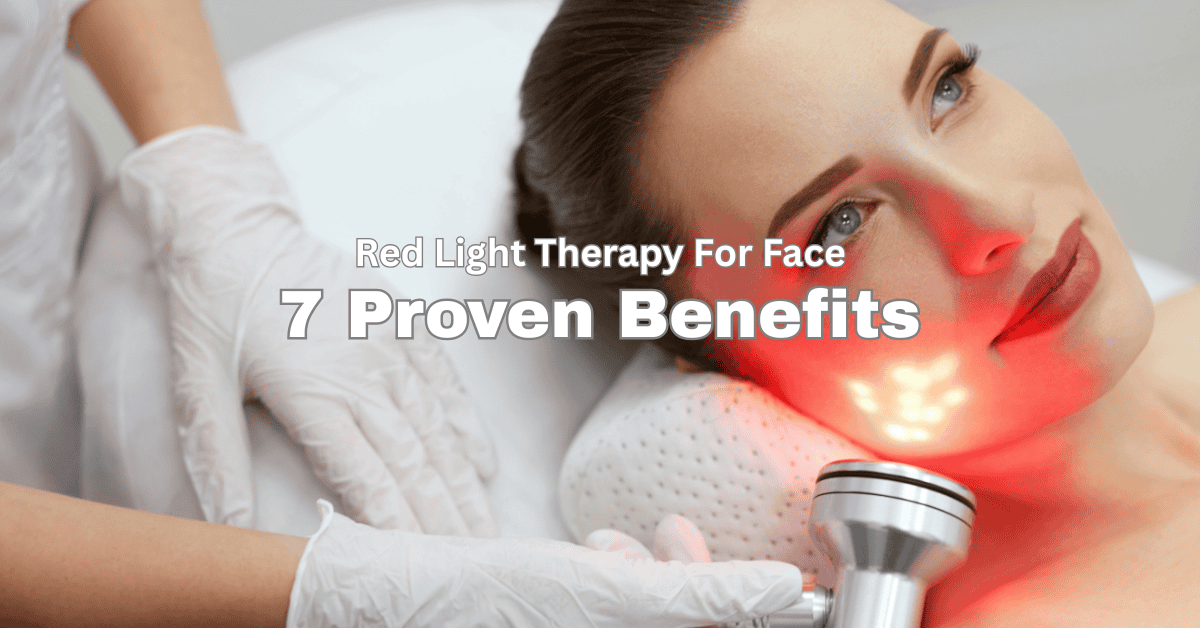Red light therapy for the face is more than a passing trend-it’s a science-backed, non-invasive treatment that can help you achieve healthier, more radiant skin. Whether you want to smooth fine lines, calm redness, or boost your natural glow, red light therapy offers a range of clinically supported benefits.
This guide explains the top seven advantages, drawing on expert insights and the latest research, so you can make informed choices for your skincare routine.
Key Takeaways
- Stimulates collagen and elastin for firmer, more youthful skin with red light therapy.
- Reduces fine lines, wrinkles, and roughness for a smoother facial appearance.
- Calms redness and inflammation, making it ideal for sensitive or acne-prone skin.
- Accelerates healing and helps fade scars and blemishes for clearer skin.
- Evens out skin tone and boosts overall radiance.
- Supports acne treatment by reducing inflammation and breakouts.
- Offers a safe, non-invasive option suitable for most skin types.
Stimulates Collagen and Elastin for Firmer Skin
One of the most celebrated benefits of red light therapy is its ability to boost collagen and elastin production. Collagen and elastin are the proteins that keep skin firm and elastic, but their levels naturally decline with age.
According to Texas Dermatology and a comprehensive review in the journal Photobiomodulation, Photomedicine, and Laser Surgery, red light therapy stimulates fibroblasts-the cells responsible for producing these proteins-resulting in smoother, plumper, and more youthful-looking skin. This effect is supported by studies showing increased gene expression for collagen synthesis and skin repair after red light exposure.
Reduces Fine Lines, Wrinkles, and Skin Roughness
If you’re looking to minimize visible signs of aging, red light therapy is a gentle yet effective choice. Clinical studies, including those cited by the American Academy of Dermatology, show that more than 90% of patients noticed improvements in fine lines, wrinkles, and skin texture after a series of red light treatments.
The therapy works best for moderate lines and roughness, supporting a smoother, more refined complexion over several weeks of consistent use.
Calms Redness and Soothes Inflammation
Red light therapy’s anti-inflammatory properties make it a standout for those with sensitive, red, or irritated skin. Dermatology experts highlight its ability to calm conditions like rosacea, eczema, and acne by reducing inflammation and supporting a balanced skin barrier.
By targeting the underlying inflammation, red light therapy helps create a more even, comfortable skin tone without harsh chemicals or invasive procedures.
Related: Who Should Not Use Red Light Therapy? 5 Key ReasonsAccelerates Healing and Fades Scars
Red light therapy is well-known for speeding up the skin’s natural healing process. It boosts cellular energy, increases blood flow, and encourages tissue repair, which helps wounds, acne lesions, and surgical scars heal faster.
Clinical research shows that regular red light treatments can help fade old scars and minimize the risk of new marks forming, making it a valuable addition to post-procedure care or acne recovery routines.
Improves Skin Tone and Texture
Uneven skin tone, hyperpigmentation, and rough texture are common concerns, especially with age or sun exposure. Red light therapy enhances blood circulation and stimulates cellular turnover, helping to fade dark spots, even out discoloration, and smooth the skin’s surface.
Many users report a brighter, more radiant complexion after a series of treatments, as increased circulation delivers nutrients and oxygen to skin cells for a healthy glow.
Related: Red Light Therapy vs. Other Facial Treatments: What Works Best?Supports Acne Treatment and Reduces Breakouts
While blue light therapy is often used to target acne-causing bacteria, red light therapy plays a crucial supporting role. It reduces inflammation, speeds up healing of existing breakouts, and minimizes the risk of post-acne marks.
A randomized controlled clinical study found that 36% of people with mild to moderate acne experienced fewer lesions after regular red light therapy sessions. This makes it especially helpful for those with persistent or inflammatory acne.
Safe, Non-Invasive, and Suitable for Most Skin Types
One of the most appealing aspects of red light therapy is its safety profile. Unlike UV treatments or aggressive peels, red light therapy is non-invasive, painless, and has minimal side effects when used as directed.
The FDA has cleared several at-home red light devices for treating signs of skin aging, and dermatologists consider it a low-risk option for most people. However, if you have a medical condition or are taking photosensitizing medications, consult a dermatologist before starting treatment.
Conclusion
Red light therapy for the face offers a range of proven benefits, from boosting collagen and smoothing wrinkles to calming inflammation and accelerating healing.
Its non-invasive nature and compatibility with most skin types make it an accessible option for anyone seeking healthier, more radiant skin. For best results, consistency is key-regular sessions over several weeks can lead to visible improvements in tone, texture, and overall appearance.
If you’re considering adding red light therapy to your routine, start with a quality device and follow expert guidelines for safe, effective use.
For more practical tips, safety guidance, and step-by-step instructions, explore our complete beginner’s guide to red light therapy for the face. Your journey to brighter, healthier skin can begin today.

Leave a Reply